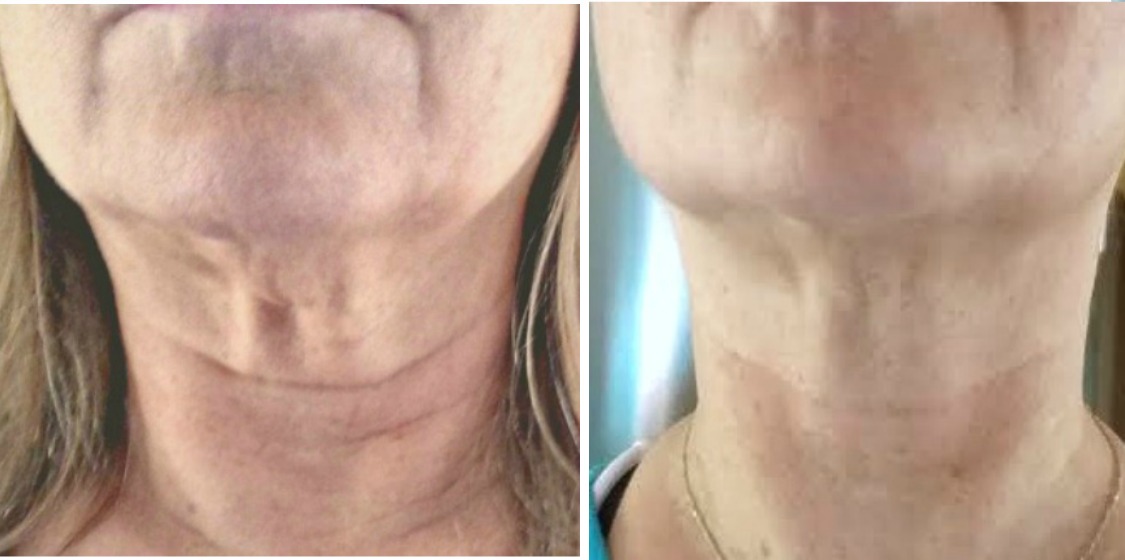- FACE |
- EYES |
- SKIN |
- WHAT'S NEW?
Disclosure: As an associate of Amazon and others, I may earn commission on certain purchases.
Botched Plastic Surgery
How can you avoid botched plastic surgery results?
While there are no
guarantees, knowing the top 10 high risk procedures can help you make an informed decision.
If you're considering cosmetic surgery, keep in mind that older patients
are more susceptible to certain risks such as..............anxiety, side effects to anesthetics,
surgical invasion and slow recovery periods......... to name a few.
Here are the top ten high-risk procedures.
1. Lower Body Lift
This
is an invasive body contouring procedure for patients who have lost a
lot of weight in a short time. It works by removing extra skin and fat
between the mid-abdomen and the upper thighs.
Since incisions are long and a
dramatic amount of tissue is removed, there are risks of fluid
build-up, infection, bleeding and blood clots. Recovery can take up to two weeks.
2. Abdominoplasty
A tummy tuck is where the skin and fat above the abdominal
muscles are lifted away from the rest of the body, excised, stretched
out and sutured.
The anesthetics alone are enough to make a
twenty-year-old nauseous. Recovery time is two to three weeks, with a
long list of possible side effects including bleeding, infection, blood
clots, deep vein thrombosis, and cardiac and pulmonary complications.
You are also guaranteed to have a long scar from hip to hip.
3. Weekend Face Lift
This
face lift is characterized by pulling facial skin tight instead of
manipulating the muscles of the facial structure to reduce wrinkles,
resulting in a windswept appearance.
As the skin loses its tightness
from the sagging and wrinkles may be even worse than before. While the
recovery period is fast, the results are mediocre. This procedure has
lower health risks, but it takes a toll on your wallet and emotions.
4. Traditional Liposuction
Traditional
liposuction is the removal of fat tissue without any assistance, such
as ultrasound or tumescent solution. It often tears apart blood vessels,
elastic tissues and nerves.
This causes dramatic pain, bruising and
even bleeding beneath the skin in older patients. Traditional
liposuction produces poor results that are absolutely not worth these
risks.
5. Eyelift
A cosmetic eye lift, or
blepharoplasty, removes fatty tissues surrounding the eyes that cause a
perpetually exhausted appearance.
Because incisions are made so close to
the eyes, side effects can include temporary or permanent blindness,
trouble opening or closing the eyelids, and ectropion, or eyelids that
turn inside-out.
6. Arm Lift
A brachioplasty's
biggest risk for older patients is the surgical manipulation of very
delicate, aging skin. Most often, an older patient's skin is thin and
has lost elasticity. This will prolong the healing process.
Infection or
bleeding beneath the skin may occur. An arm lift also leaves a long
scar that runs from the underarm to the elbow.
7. Face Lift Surgery
A
full face lift uses incisions that run from the temples, around the
back of the ear and into the lower hairline. Extra skin is removed and
the facial muscles are often manipulated to rest higher on the facial
structure.
A full recovery requires two weeks. Possible side effects
include numbness, asymmetry, facial nerve injury and weakness.
8. Nose Job
A
rhinoplasty often involves moving the nasal bones into an aesthetic
location on the face. Patients with osteoporosis are at high risk for a
broken nose.
Other risks include broken blood vessels, blood clots and
altered nasal passages. Recovery can take up to two weeks, but the final
results of a nose job do not appear for a year or more.
9. Thigh Lift
Similar
to the body lift, a thigh lift uses a long incision that wraps around
the groin to the top of the outer hip. The surgeon then excises extra
fat and skin. Closing the suture then lifts the thigh.
This is another
invasive procedure that removes high volumes of fat, skin and body
fluid, putting patients at high risk. It also has a recovery period of
one to two weeks.
10. Breast Lift or Augmentation
A
breast lift removes sagging skin to lift the breast into a more
youthful position. A breast augmentation alters the shape or size of the
breast by using implants or a fat transfer procedure.
The major risks
of both these surgeries are loss in sensation; loss of the areola,
nipple, or both; blood clots; and fat necrosis. These procedures have a
recovery time of six weeks.
References for botched plastic surgery:
American Society of Plastic Surgeons - www.plasticsurgery.org
Daniel Shapiro MD – www.shapiroplasticsurgery.com
Additional Reading
Bad Celebrity Plastic SurgeryHome › Anti-Aging Research › Botched Plastic Surgery
Popular Articles
Watch how I reduced crepey skin under my eyes....
As an Amazon Associate I earn from qualifying purchases. Other links on this site may lead to other companies I'm associated with.
Recent Articles
-
Easy Eye Solutions - Under Eye Lines & Crepey Skin. See My Results!
Jun 29, 21 04:20 PM
Easy Eye Solutions Instant Eye Tuck Serum. Free Shipping & Sample Sizes. See before and after video -
Crepey Skin Remedies - Natural Cure for Face, Eyes and Neck
Nov 04, 20 02:53 PM
Crepey Skin Remedies - Crepey skin can be reversed naturally at home. See before & after pictures of my results.













